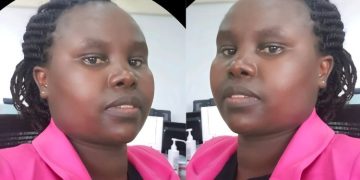Major roads in Nairobi have experienced floods and severe traffic congestion as the long rains start as forecasted by the Kenya Meteorological Department.
The Kenya Meteorological Department had warned against floods and intensified rainfall exceeding 20mm within 24 hours, starting from March 9, 2025.
Weatherman listed areas that will be affected by the heavy rain include parts of Lake Victoria Basin, Rift Valley, Highlands (East & West), Nairobi, and Lowlands.
“Be on alert for floods, flash floods and poor visibility. Avoid sheltering under trees or near grilled windows. Drivers, watch out for slippery roads and reduced visibility,” the weatherman cautioned.
Additionally, the National Transport and Safety Authority Act (NTSA) has also warned motorists and users to avoid flooded roads.
“Avoid flooded roads. What looks like a shallow puddle could be deeper and dangerous than it seems,” NTSA stated.
Nairobi Highways Affected by Floods
Major roads leading to the Nairobi Central Business District (CBD) have experienced heavy traffic jams at the start of the long rains.
During the morning hours, heavy traffic was seen along Thika Superhighway, Jogoo Road, Waiyaki Way, Outering Road, and the Nairobi Expressway have been heavily affected.
Thika Superhighway, traffic snarled up from KCA University leading to CBD while Waiyaki Way near Chiromo experienced heavy traffic.
Further, Outering Road experienced massive traffic at the Donholm Interchange on the entry into Manyanja and Savannah roads.
Commuters were forced to jump through large puddles of water upon arrival at the CBD.
Also Read: Kenya Met Lists Regions to Experience Rains in 5-Day Forecast
NTSA Safety Tips for Motorists
Avoid Travelling in Heavy Rain
The transport and safety authority urges motorists to avoid driving during heavy rain.
When it pours heavily, vision may be hindered and, as a result, increase the chances of an accident.
Avoid Crossing Running Water
Furthermore, the NTSA warned drivers against attempts to cross running water.
With the presently experienced El-Nino rains, there may be several roads full of running water.
Slow Down
When driving in wet weather, it is advisable to slow down as a number of factors may cause accidents.
Speeding on a wet road may result in skidding, and speeding when it is raining may hinder clear visibility, among many other factors
Also read: Weatherman Lists Areas to Receive Rainfall This Week Ahead of Long Rains Season
Use Wiper Blades
NTSA also encouraged drivers to use wipers regularly to clear the windshield of rain and debris.
They called on motorists to ensure that the windshield wipers are in good working condition and replace them if they are worn or streaking.
Turn on Headlights
During heavy rains, visibility is usually hindered.
As such, the authority has reminded drivers to turn on headlights so that other road users and fellow drivers may see them.
Follow our WhatsApp Channel and join our WhatsApp Group for real-time news updates.









































































